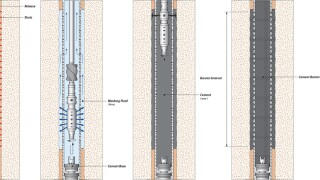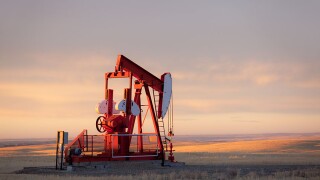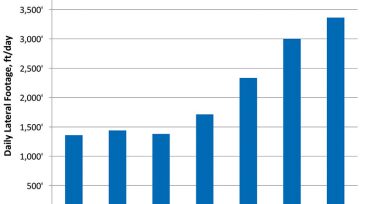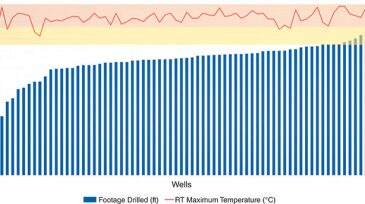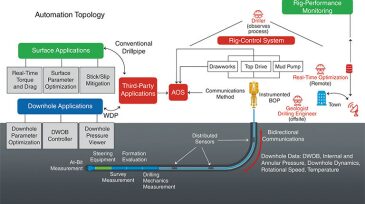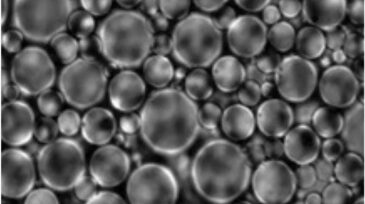Drilling
Oil and gas companies drilled 75 “high-impact” wells in 2024, representing 5.2 billion BOE.
This paper presents a comprehensive literature review of perforate, wash, and cement techniques that compares new methods with traditional ones and uses field cases and computational fluid dynamics to find the most cost- and time-effective practices without sacrificing safety.
The authors of this paper describe a method of stimulating a multizone hydrocarbon-producing well wherein a tool is deployed downhole by wireline to generate acid vapor at a target depth, allowing each interval to be treated uniquely.
-
Examples of evolution in well construction during the past several years include new horizontal-well applications, breakthroughs in bit and directional-drilling technology, synthetic fluids, fracture-stimulation advancements, managed-pressure drilling, and the digital revolution.
-
Drilling systems automation requires a digital backbone. One segment of that backbone is the interval between the drill bit and the surface. Wired pipe removes both the bandwidth and latency barriers of the available measurement-while-drilling telemetry systems.
-
A drilling team has focused on increasing lateral lengths in the Marcellus Shale. The team determined which operational practices would need to be revised in order to drill and case laterals in excess of 18,000 ft.
-
In this paper, the application of a real-time T&D model is demonstrated. The process of T&D analysis was automated, and the time and cost required to run physical models offline was reduced or, in some cases, eliminated.
-
A joint-development project has delivered a high-temperature measurement-while-drilling/logging-while-drilling (MWD/LWD) suite rated for 200°C. Results to date are compared with previous performance in the Gulf of Thailand (GoT).
-
Formation damage: Do we always need to have a high focus on its prevention, or do occasions exist when it really does not matter?
-
This paper presents a case history of drilling automation system pilot deployment, including the use of wired drillpipe, on an Arctic drilling operation.
-
This paper describes the progress of directional-drilling-automation systems along the cognitive functions and levels of automation as defined by the Levels of Automation Taxonomy (LOAT) hierarchy introduced by the Drilling Systems Automation Roadmap Industry Initiative.
-
A high-carbon-dioxide (CO2) carbonate gas field offshore Sarawak, Malaysia, is scheduled for development. Reservoirs in this region have an average clay content of 8%; more than 50% of this clay content is migratory illite, and 15% is migratory kaolinite.
-
This paper describes a coreflooding program performed with sandpacks at different permeabilities, water qualities, and injection conditions.


